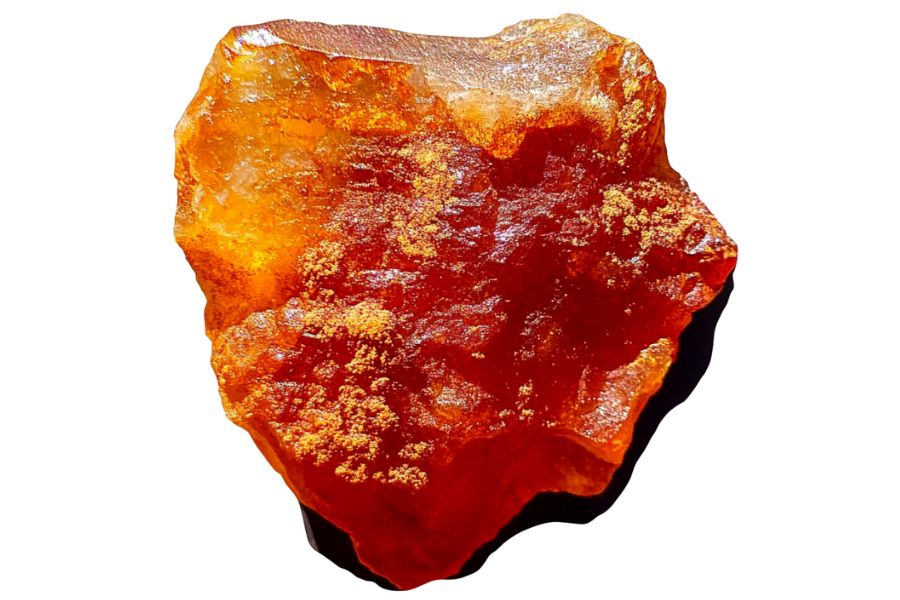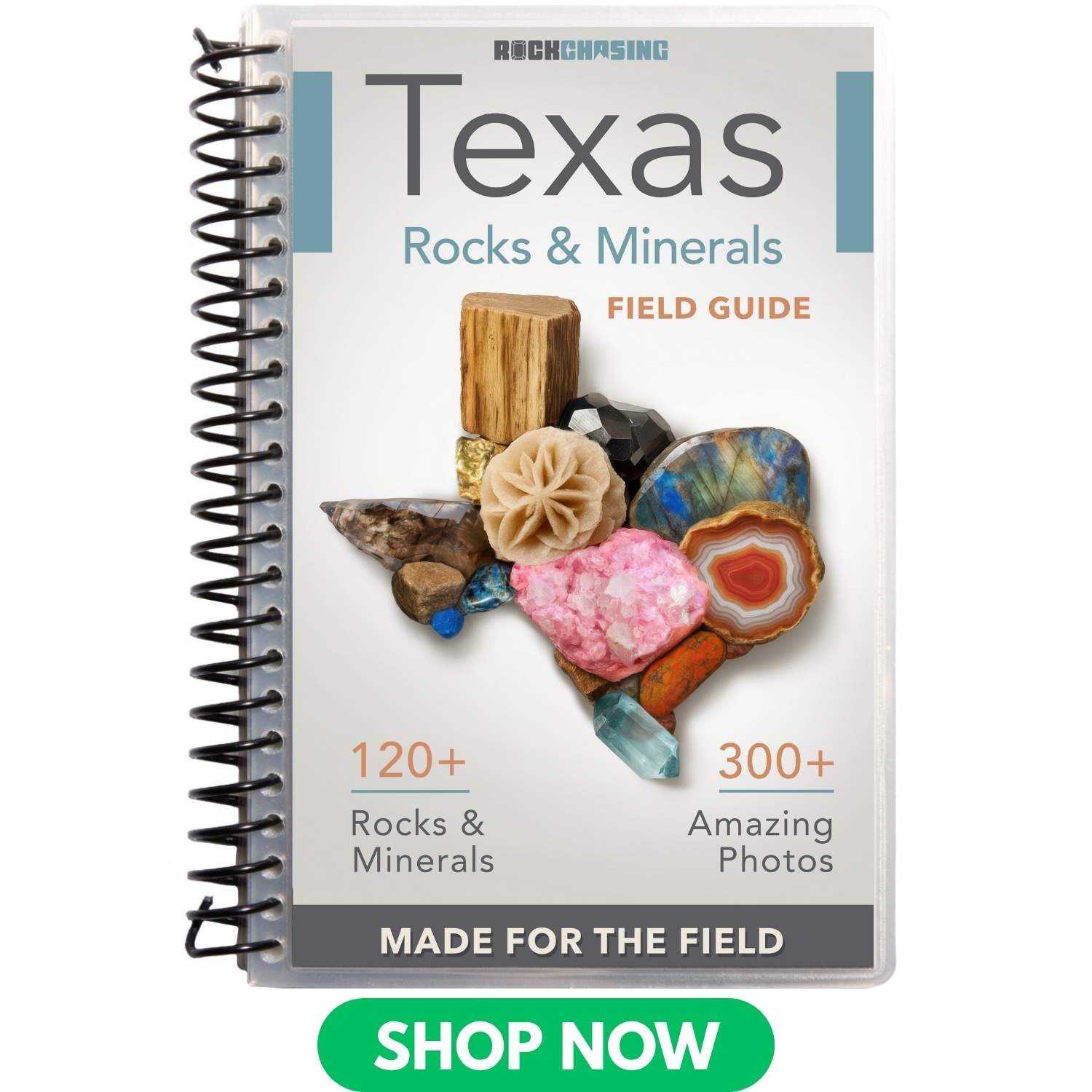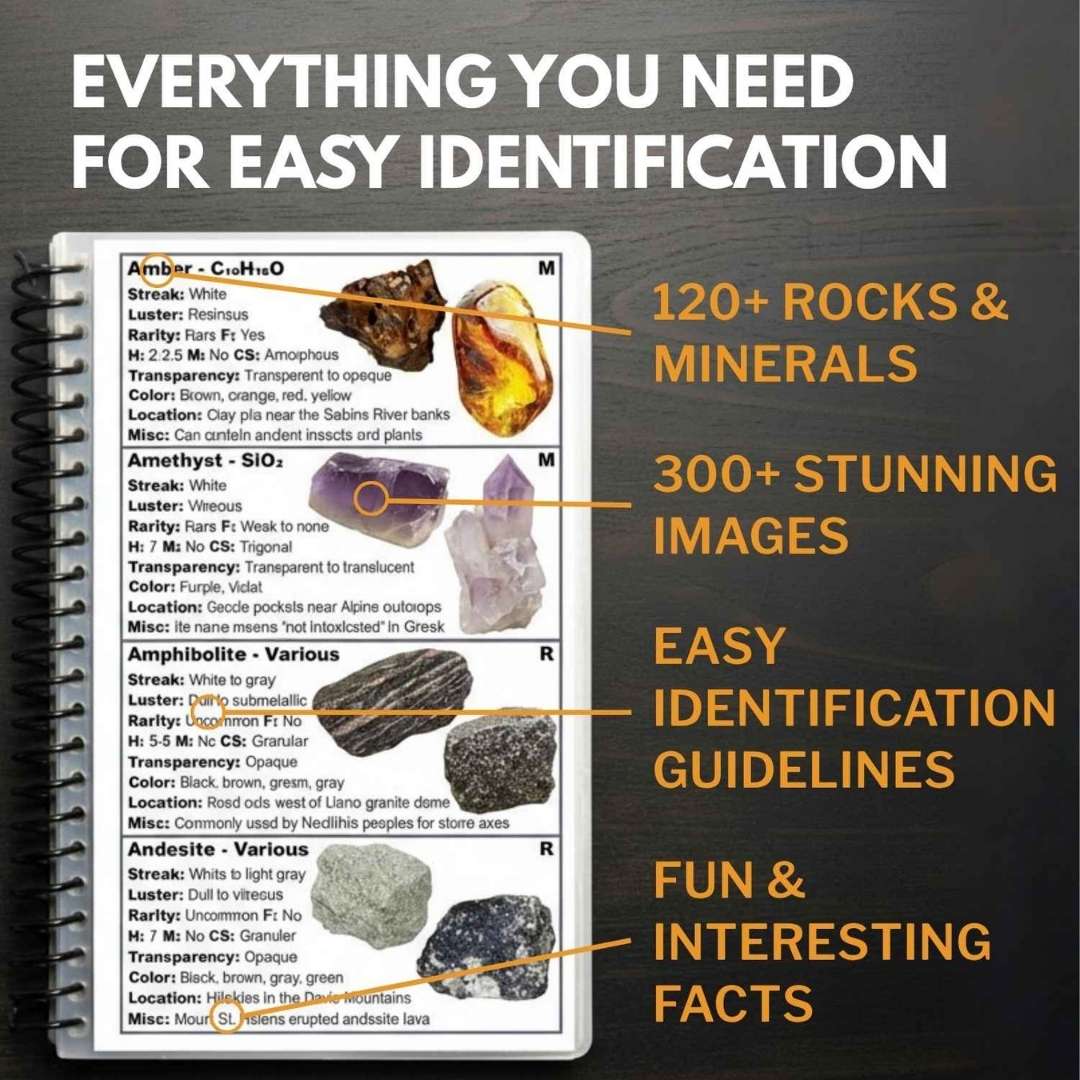Texas stretches wide with open land, dry rivers, and rocky hills. Hidden in this rough ground, you can find carnelian, an orange-red stone that glows in the sunlight.
People have valued carnelian for centuries. Some believed it brought strength and courage. Others used it to make simple carvings and jewelry. In Texas, you don’t have to dig deep to find it. It’s scattered in riverbeds, rocky fields, and quiet backroads.
If you know where to look, you can pick up pieces right off the ground. That’s why we’ll list here the best places in Texas to find carnelian.
You’ll have everything you need to track it down, and the only thing that makes the hunt even better is Rock Chasing’s Texas Rocks & Minerals Identification Field Guide. It helps you recognize what you’ve found in seconds and keeps you from walking past something incredible without realizing it.
How Carnelian Forms Here
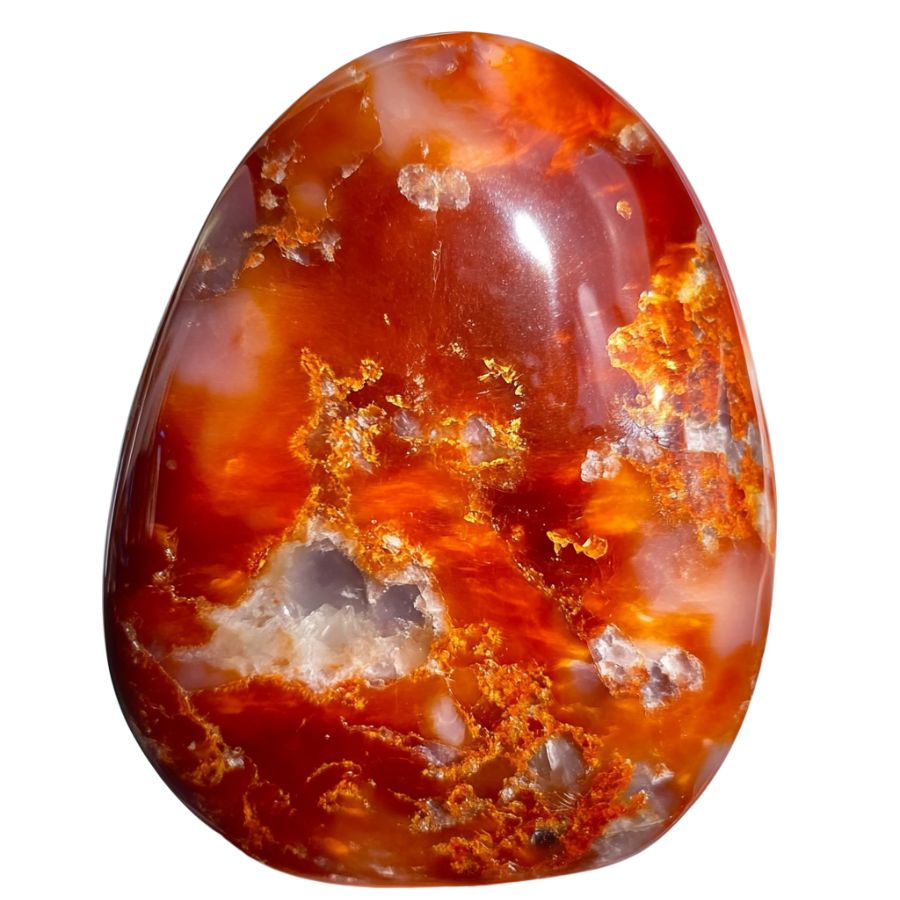
Carnelian forms when silica-rich fluids seep into volcanic rocks and slowly crystallize. It starts as chalcedony, a type of quartz, but gets its reddish-orange color from iron oxide impurities.
The process happens deep underground where hot water carries dissolved minerals through cracks and cavities in volcanic rocks. Over millions of years, as the liquid cools and pressure changes, the silica molecules line up to form tiny, fibrous crystals.
The more iron present during formation, the deeper the red color becomes. Sometimes, you can even see bands or zones in the stone where different amounts of iron were present during different stages of formation.
Types of Carnelian
Carnelian comes in a fascinating range of colors. From vibrant reds to deep blacks, these natural variations occur due to different concentrations of iron oxide and varying formation conditions. Let’s explore the unique features of each color variety.
Red Carnelian
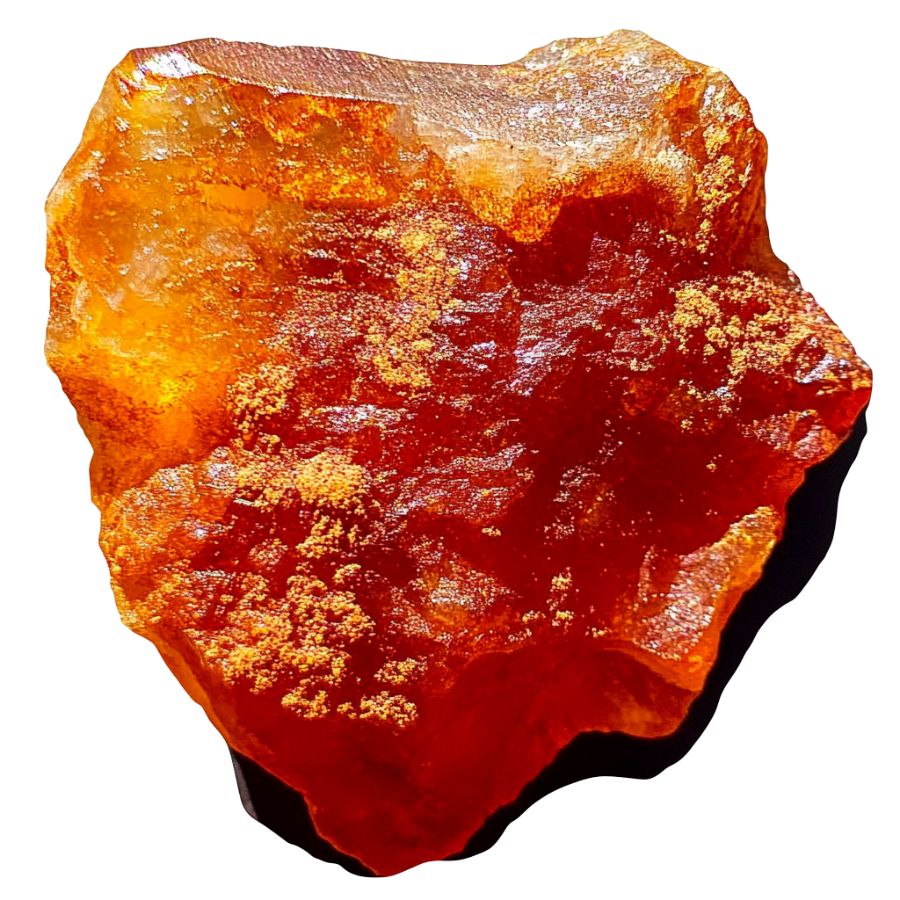
Red Carnelian displays vibrant warm colors ranging from light orange to deep reddish-brown. Its surface has a glass-like shine and can be either see-through or solid.
What sets Red Carnelian apart is its perfect and even coloring. Unlike other similar stones, it rarely shows any stripes or patterns. Instead, it has a smooth, consistent appearance that makes it stand out.
The stone’s microscopic crystal structure gives it an especially glossy finish when polished.
When examining Red Carnelian, you’ll notice it has a special way of breaking – it forms smooth, curved surfaces rather than straight lines. This quality helps craftspeople shape it into various forms while maintaining its natural beauty.
If you want REAL results finding incredible rocks and minerals in Texas you need one of these 👇👇👇
Finding the coolest rocks in Texas isn’t luck, it's knowing what to look for. Thousands of your fellow rock hunters are already carrying Rock Chasing field guides. Maybe it's time you joined the community.
Lightweight, mud-proof, and packed with clear photos, it’s become the go-to tool for anyone interested discovering what’s hidden under our red dirt.
Join them, and make your next rockhounding trip actually pay off.
📘 Order the Texas Field Guide Now →
What makes it different:
🚙 Field-tested across Texas rivers, ranchlands, and roadcuts.
📘 Heavy duty laminated pages resist dust, sweat, and water.
🧠 Zero fluff — just clear visuals and straight-to-the-point info.
📍 Find hidden gems like Blue Topaz, Texas agate, and petrified wood fast.
⭐ Rated 4.8★ by real collectors who actually use it in the field.
Orange Carnelian
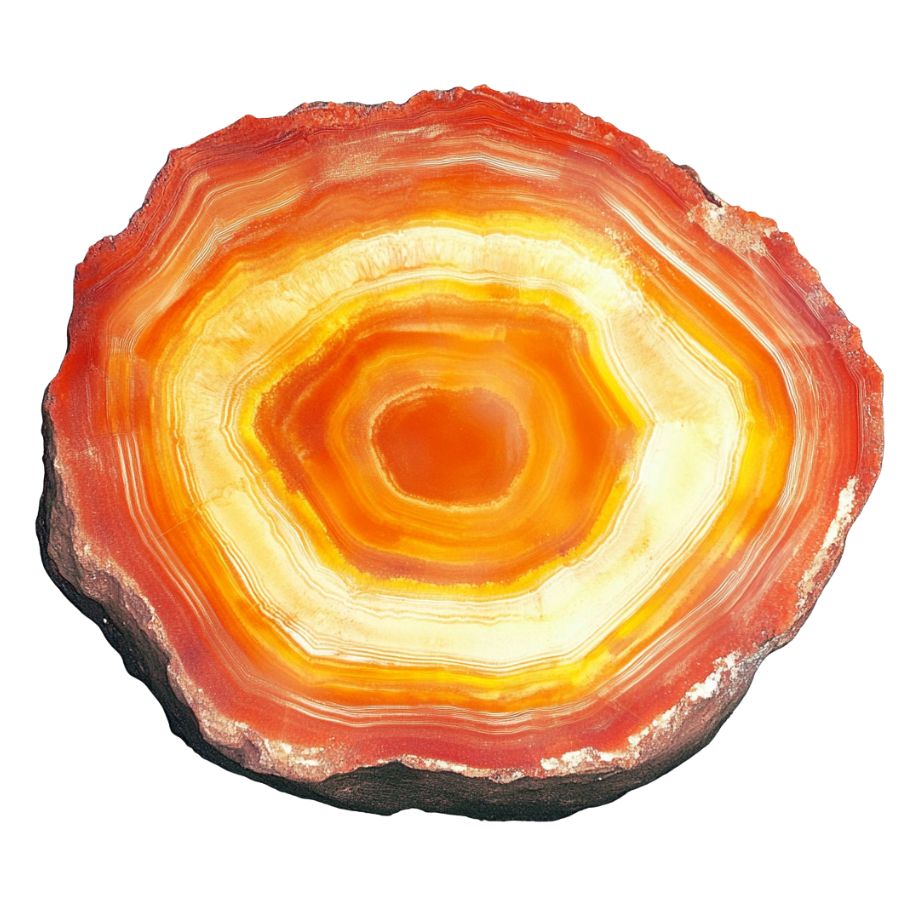
Orange Carnelian showcases bright, sunny colors from light orange to peachy hues. This stone often shows warm, honey-like tones that seem to glow from within.
The stone’s internal structure is made up of tiny quartz crystals packed tightly together. This arrangement gives Orange Carnelian its distinctive appearance and makes it respond beautifully to polishing.
The most sought-after pieces of Orange Carnelian show bright, vivid orange colors without any cloudy areas or dark spots. These specimens have a particularly attractive glow and maintain their vibrant appearance in various lighting conditions.
Additionally, carnelian’s versatility allows it to be fashioned into various shapes and sizes, including cabochons, beads, and carvings, making it a favorite among rockhounds and gemstone enthusiasts.
Pink Carnelian
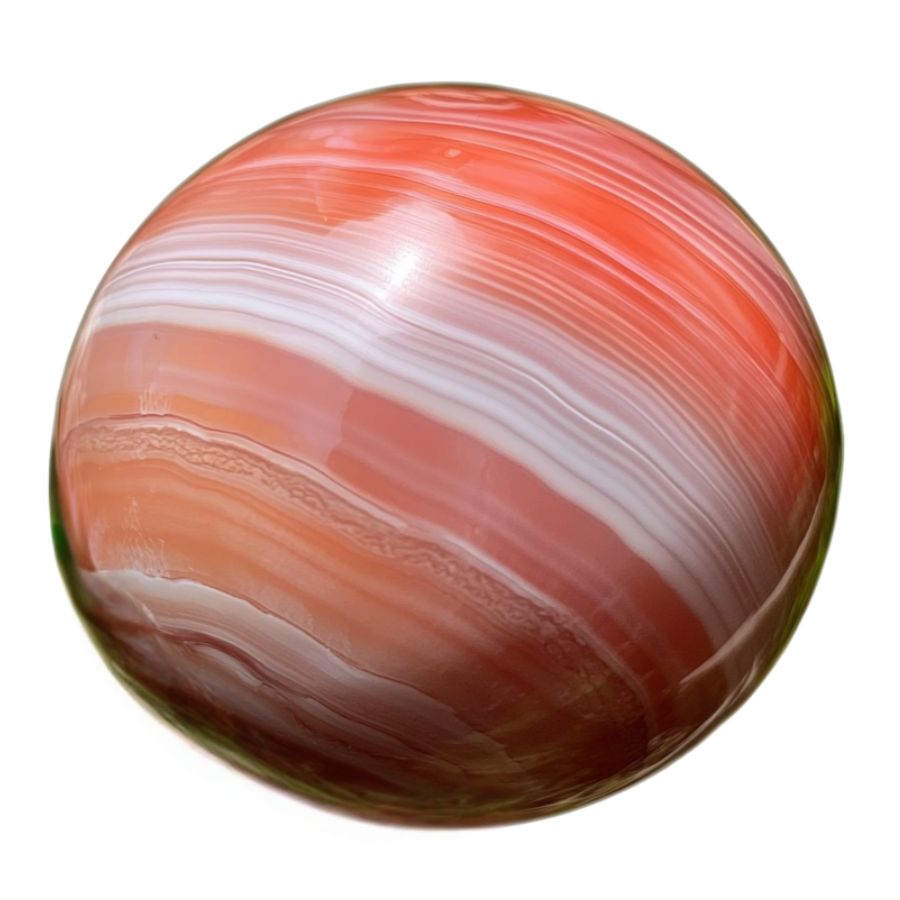
Pink Carnelian is a unique variety of carnelian, distinguished by its opaque pink hue. This coloration arises when the red hues of typical carnelian do not fully develop, resulting in a softer, pastel appearance. The stone can also exhibit a translucent quality.
So traditional carnelian ranges from bright orange to deep reddish-brown, pink carnelian, on the other hand, is characterized by its lighter, pastel pink shades.
Additionally, the stone often appears slightly cloudy, which adds to its gentle appearance.
The stone’s surface can be polished to a high shine, which enhances its natural beauty. The most desirable specimens show an even, consistent pink color throughout and maintain their attractive appearance under various lighting conditions.
Yellow Carnelian
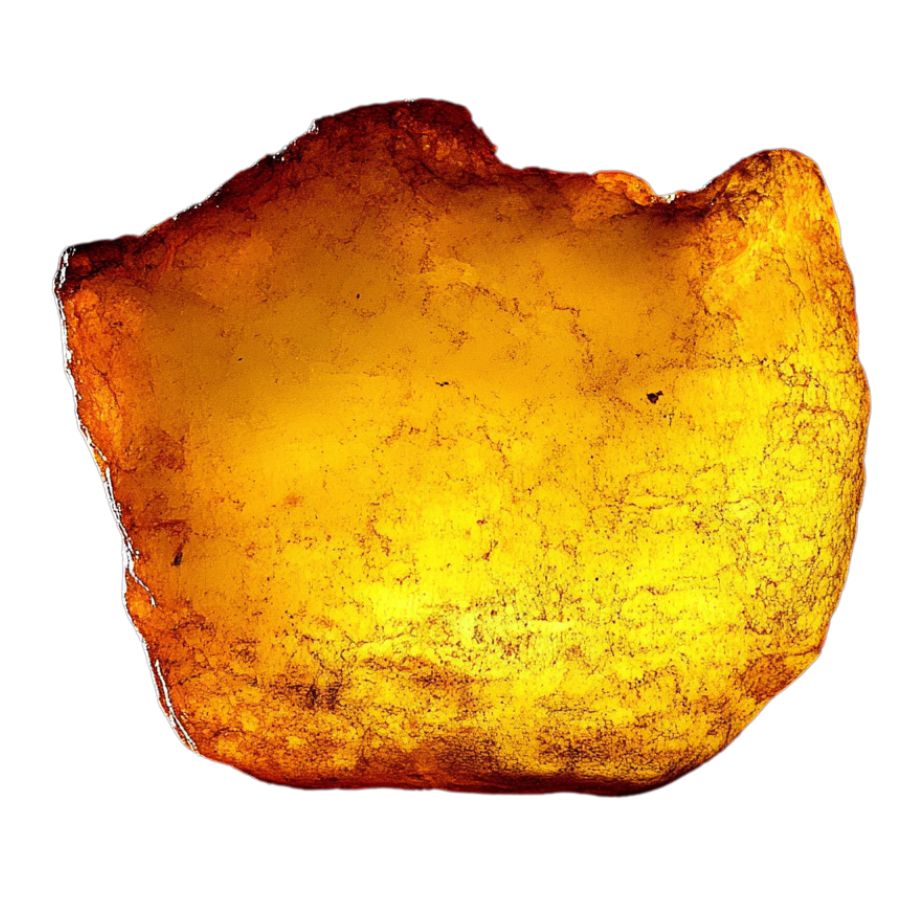
Yellow Carnelian exhibits warm amber to golden-yellow colors that can sometimes blend into honey-orange tones. Its appearance resembles sunlight captured in stone, with a natural glossy surface. The color can vary from pale butter yellow to deep golden hues.
Unlike its orange and red relatives, Yellow Carnelian often shows subtle color variations within the same piece. These variations create gentle transitions between lighter and darker areas, giving the stone a unique depth.
Some specimens display interesting light effects, appearing almost luminous when light passes through them.
The most prized Yellow Carnelian pieces show clear, bright yellow colors without any muddy or brownish undertones. Some specimens might display subtle translucency at their edges, adding to their visual appeal.
Brown Carnelian
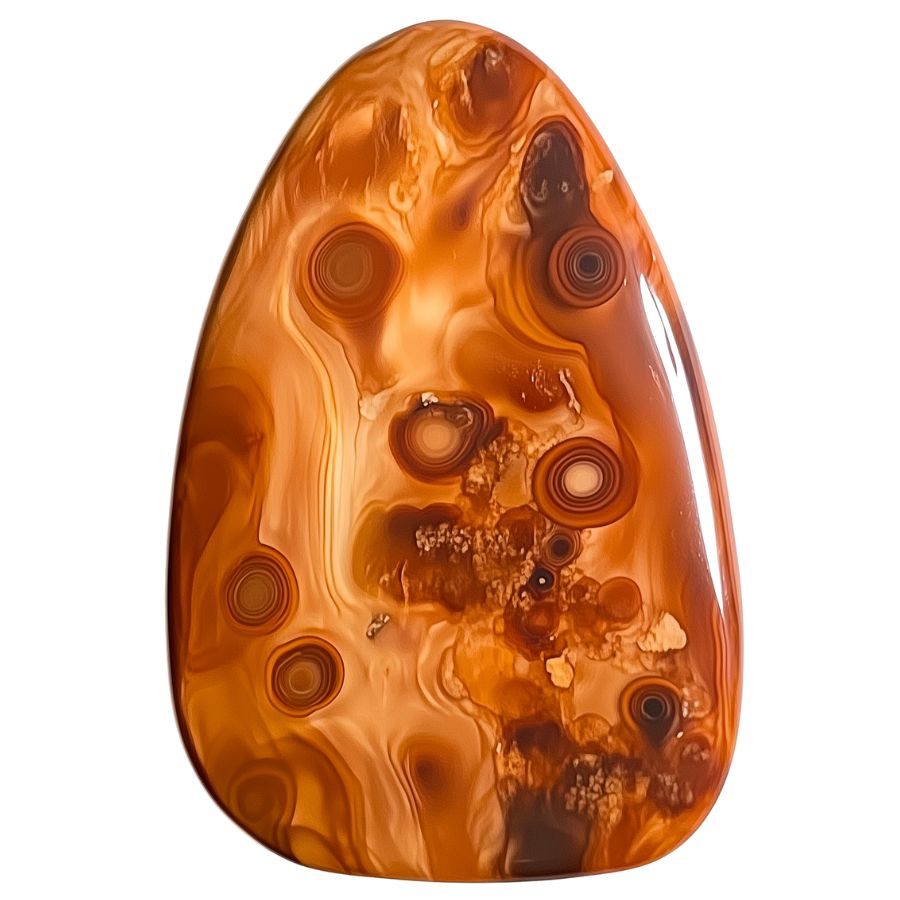
Brown Carnelian displays rich earthy tones ranging from warm chocolate to russet brown. The rich browns come from high concentrations of iron oxide mixed into the stone.
The stone’s surface is remarkably smooth and even. While similar stones often show stripes or bands, Brown Carnelian typically has a consistent coloring throughout. This gives it a distinct appearance that stone enthusiasts particularly appreciate.
Brown Carnelian differs from Sard, another type of chalcedony, primarily in color and hardness. Sard is generally darker and harder than Carnelian, which is softer and exhibits lighter shades
One fascinating aspect is its natural polish quality. The stone’s structure allows it to achieve an exceptional shine with minimal processing.
Black Carnelian
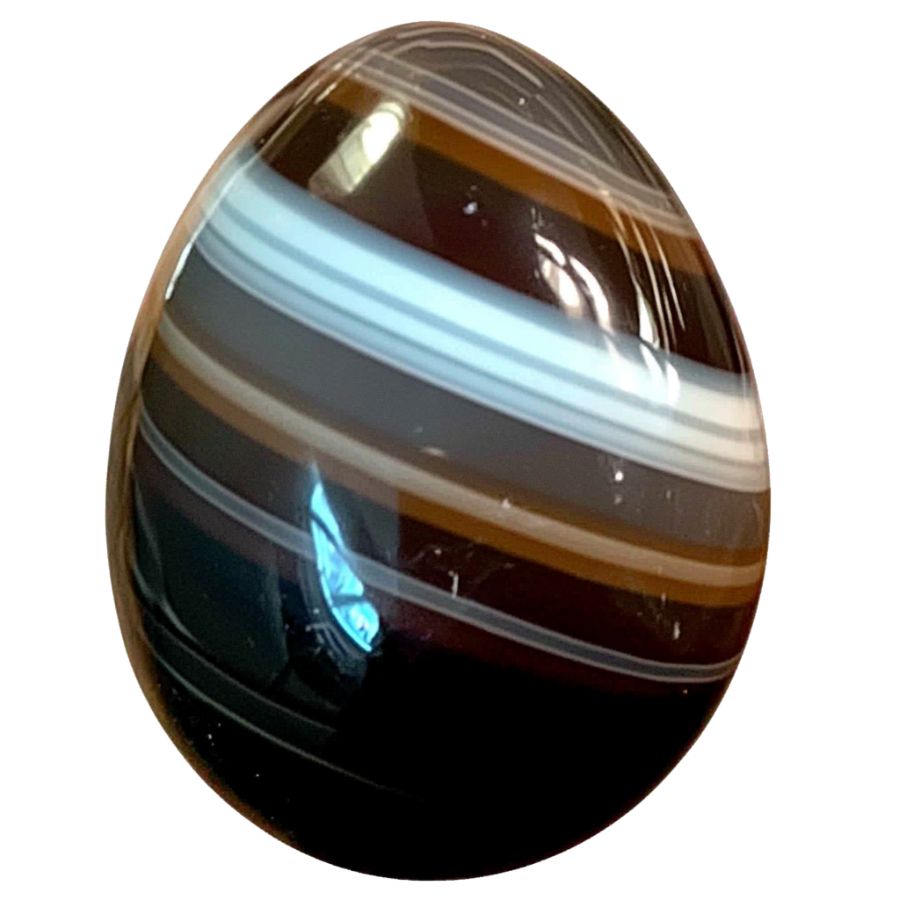
Black Carnelian shows deep, intense coloring ranging from the darkest brown to nearly pure black. The color comes from unusually high amounts of iron minerals in the stone.
Unlike standard carnelian, which typically exhibits hues of orange and red, Black Carnelian’s color is more opaque, lacking the translucence often seen in lighter varieties.
Its surface has special optical properties that create an almost metallic look when polished. The stone’s dense composition allows it to take an exceptionally high polish, bringing out subtle variations in its dark coloring.
Some specimens develop interesting patterns where extremely dark areas contrast with slightly lighter zones. These natural variations add character to each piece, making every stone unique and collectable.
Green Carnelian
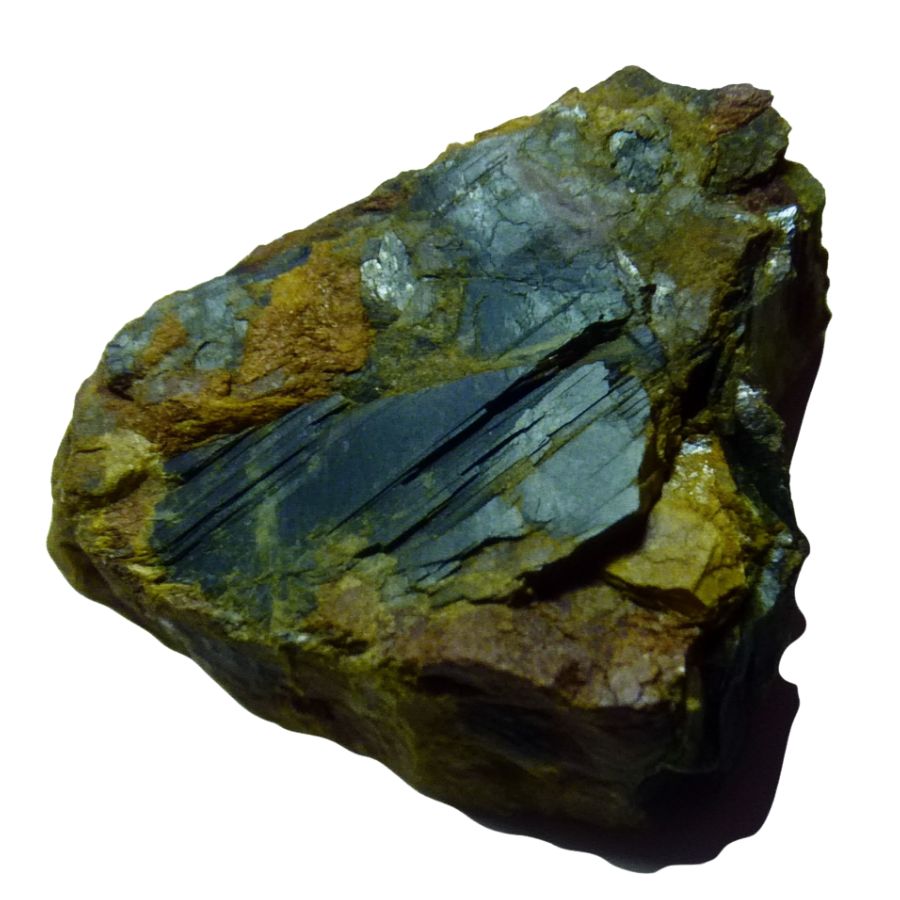
Green Carnelian shows an unusual earthy green color that can range from sage to forest green tones. The stone has a smooth, silky appearance with a natural sheen that becomes more prominent after polishing.
The stone’s texture is particularly noteworthy. Unlike the glassy appearance of other carnelians, Green Carnelian often has a more subdued, velvety look. This gives it a unique character that appeals to collectors who appreciate subtle beauty.
Green Carnelian is not as commonly found as its red or orange counterparts. It has been historically used in jewelry and decorative items due to its attractive color and durability.
Ancient civilizations valued it for its aesthetic appeal and used it in various decorative arts. It is resistant to scratches and suitable for everyday wear in jewelry.
What Rough Carnelian Looks Like
Carnelian in its rough form can be tricky to identify, but once you know what to look for, it becomes much easier. Here’s how to spot this beautiful reddish-orange stone in its natural state.
Look for the Distinctive Color Range
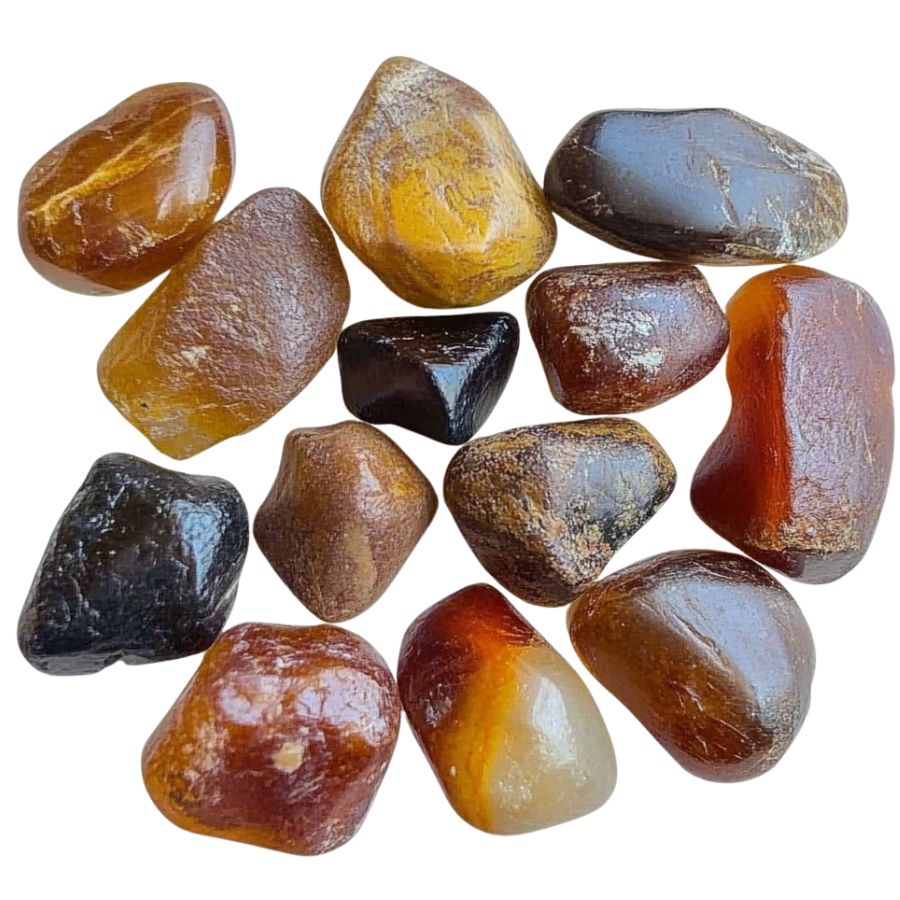
Raw carnelian typically shows up in warm, earthy shades. Look for colors ranging from light orange to deep reddish-brown. Sometimes, you’ll spot honey-brown or even yellowish patches.
Unlike other orange stones, carnelian often has a cloudy or slightly translucent quality. The color usually isn’t uniform; you might see banding or swirling patterns.
Check for the Waxy-Glass Look
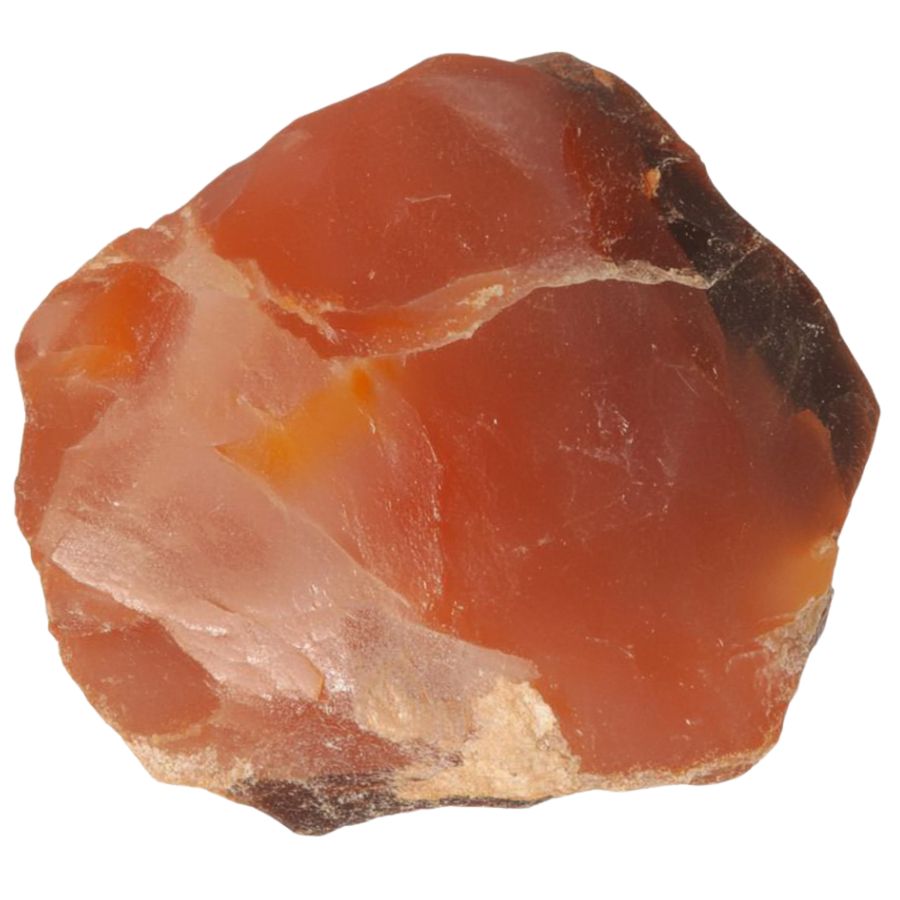
Here’s a dead giveaway – carnelian has this unique luster that’s somewhere between waxy and glassy. Hold it up to light; it won’t be completely transparent like glass, but light should pass through the edges.
Fresh breaks in the stone will show a more glassy appearance. If it’s too dull or completely opaque, it’s probably not carnelian.
Assess the Hardness and Texture
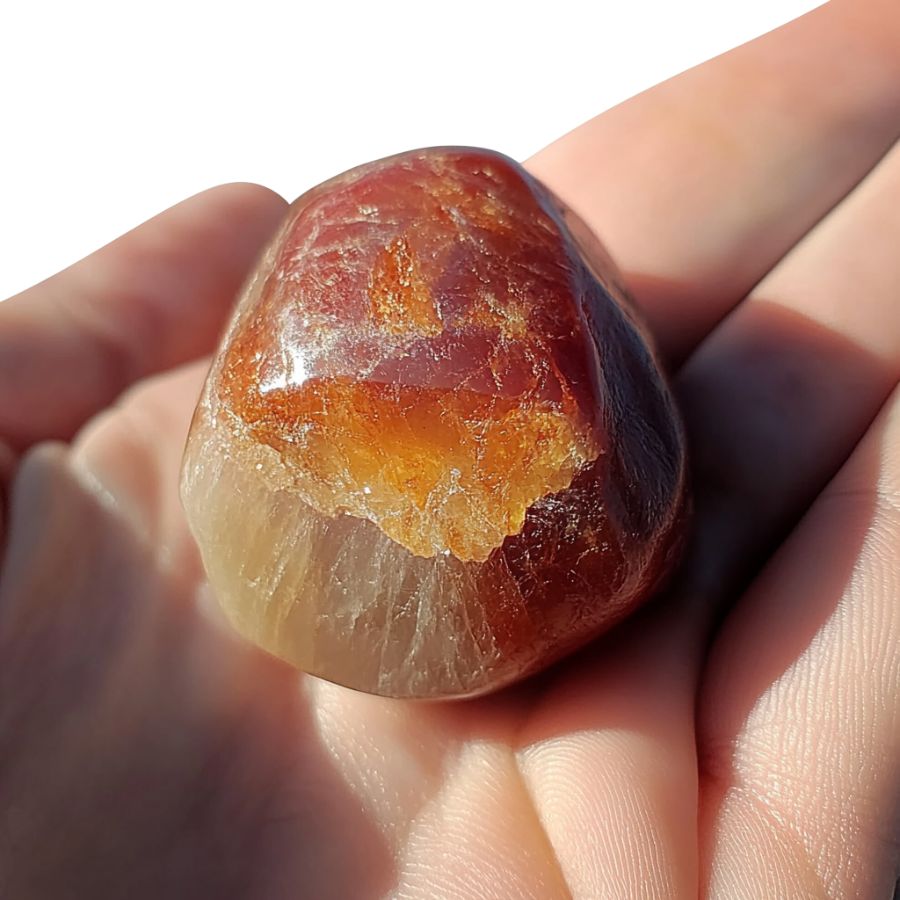
Try this: run your fingernail across the surface. Can’t scratch it? Good sign! Carnelian ranks 6.5-7 on Mohs scale. The surface should feel smooth but not slippery.
Unlike jasper (which it’s often confused with), rough carnelian has a more uneven, conchoidal fracture – think broken glass patterns.
Test the Temperature Feel
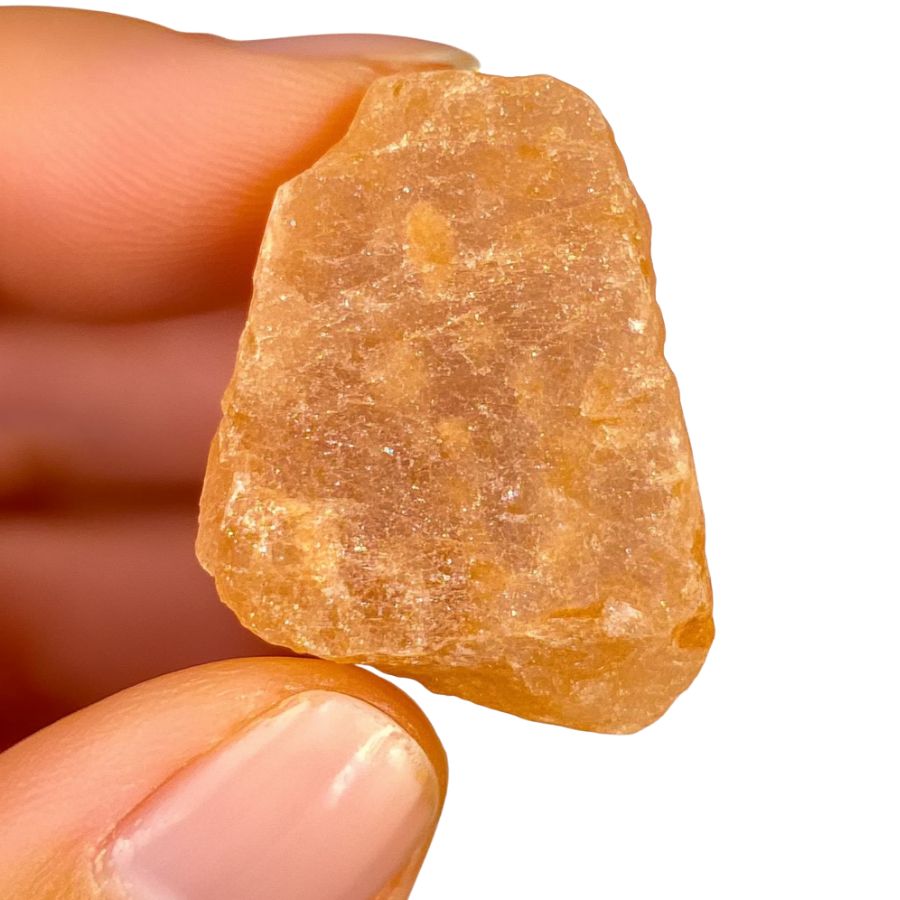
Pick up the stone and hold it for a moment. Carnelian typically feels cool to touch initially but warms up quickly. Unlike plastic imitations, it maintains a natural temperature gradient.
It shouldn’t feel unnaturally light or plasticky – there’s a solid, satisfying weight to genuine carnelian.
The Tools You Will Need
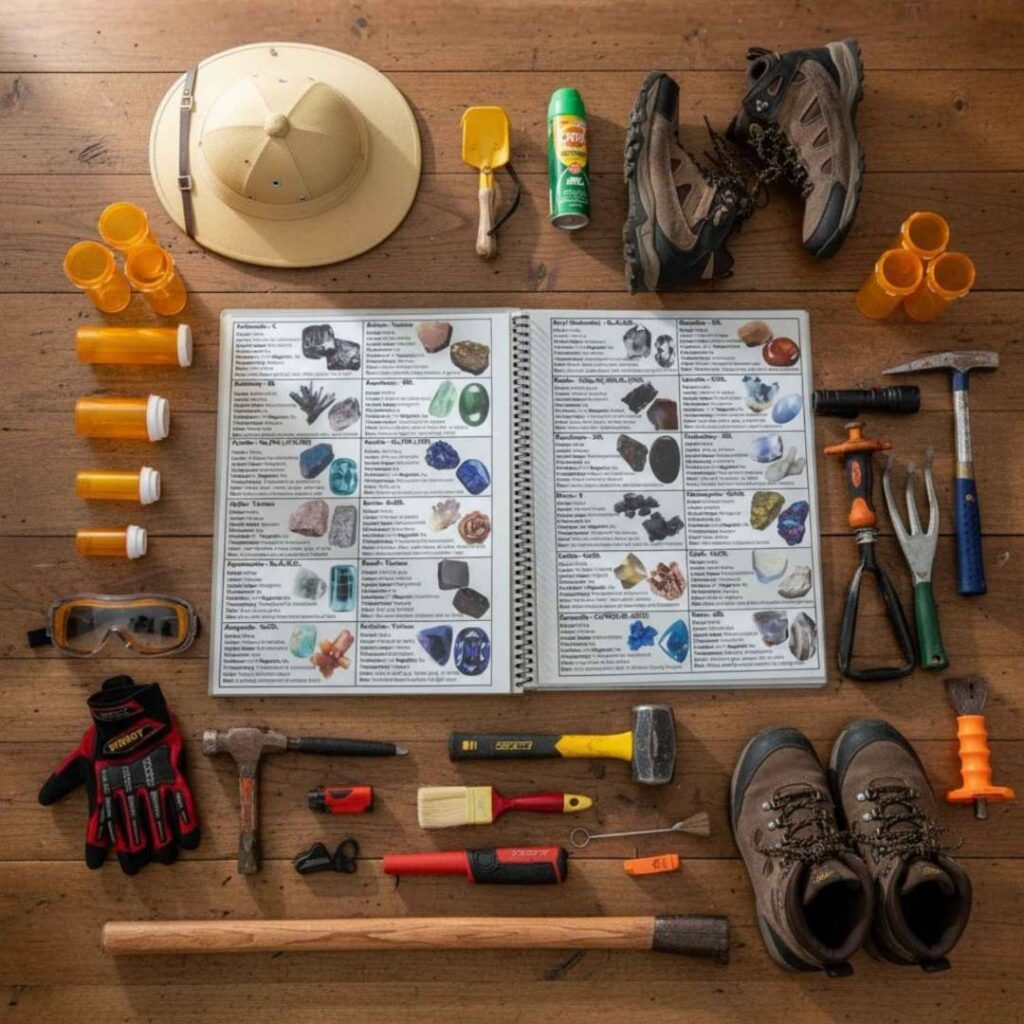
Carnelian hunting in Texas doesn’t require fancy gear or years of experience. You can get started with just a few simple tools that help you find, clean, and carry your discoveries. These are the basics: light, affordable, and easy to use for beginners who just want to get out there and start collecting.
A Trustworthy Field Identification Guide – Essential
Many beginners lose hours sorting through rocks that aren’t worth keeping. A good field guide fixes that problem instantly.
Rock Chasing’s Texas Rocks & Minerals Identification Field Guide gives you quick answers in the field, even when your hands are dusty and the light is fading. It’s the simplest way to make sure you never walk away from something valuable without knowing it.
With waterproof pages, clear photos, and short explanations, it makes recognizing Texas minerals quick and easy. It saves time, keeps you confident in your finds, and ensures you never overlook something valuable sitting right under your feet.
You can see HERE why this guide has Texas rockhounds buzzing nonstop!
Geologist’s Hammer – Essential
Carnelian often forms inside hard rock or gravel beds, so a sturdy hammer helps free the pieces without damaging them. It’s designed for breaking small rocks apart or splitting geodes cleanly. You’ll use it constantly once you start finding good material along dry creek beds and rocky washes.
Gloves – Recommended
Sharp stones and rough ground are part of the fun but can be tough on your hands. A basic pair of gloves protects against cuts, hot surfaces, and blisters while still letting you feel what you’re working with. They’re inexpensive but make a big difference during long days of collecting.
Small Bucket or Canvas Bag – Recommended
After a few good finds, you’ll want something durable to carry them in. A small bucket or canvas bag keeps your carnelians from getting chipped or lost in your pack. It’s also handy for washing or sorting stones once you’re back at the car.
Pocket Lens – Optional
A pocket lens lets you examine color patterns, grain, and texture up close. Carnelian can show subtle variations that are hard to see with the naked eye, and a quick look through a lens helps confirm what you’ve got. It’s a fun little tool that adds another layer of satisfaction to every discovery.
Tips on Where to Look
Carnelian is a common stone that forms in various geological settings. Here’s where you can typically find this reddish-orange beauty without traveling too far.
Sedimentary Rock Formations
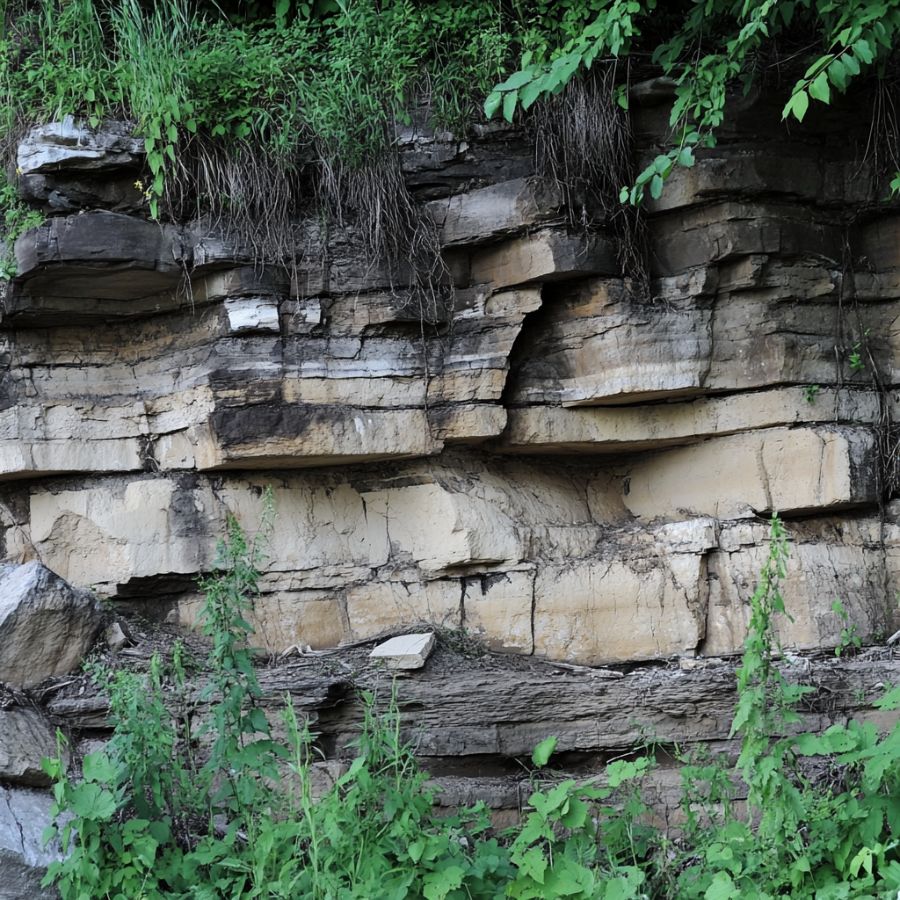
Look for areas with lots of sedimentary rocks, especially sandstone and limestone. Carnelian often forms in these layers through mineral replacement.
Focus on eroded cliff faces and exposed rock walls where water has carved through layers over time, revealing hidden deposits of carnelian that might have formed within these sedimentary beds through centuries of mineral-rich water seepage.
River Beds and Creek Banks
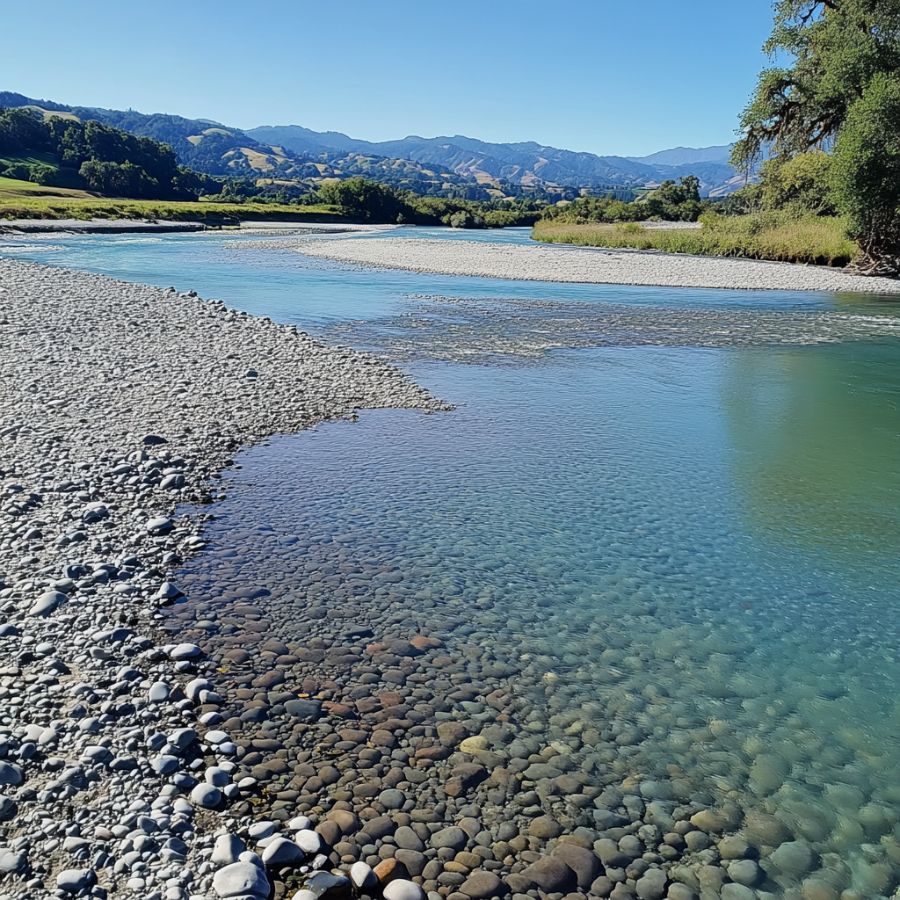
Check gravel beds in rivers and creeks, particularly after heavy rains when new material gets exposed.
Scan areas where water slows down – like bends in the river or behind large rocks – as heavier stones like carnelian tend to settle there. Dig about 6-12 inches into the gravel, as larger pieces often sink deeper.
Desert Areas
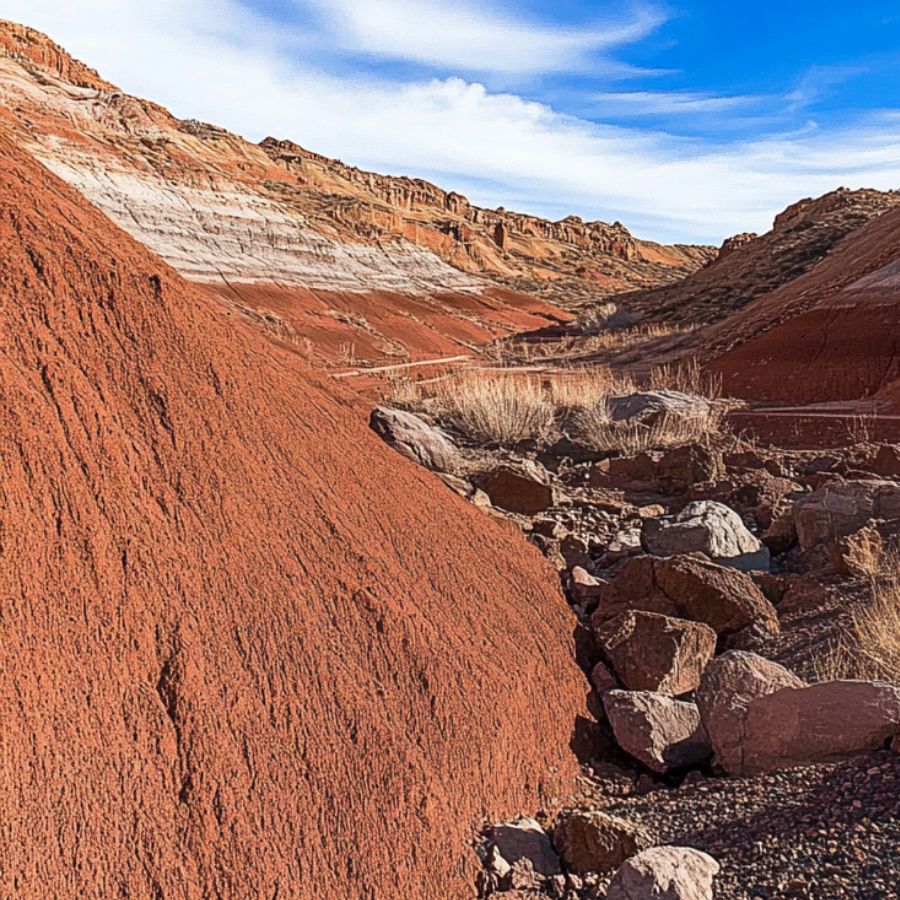
Search desert regions with scattered rock formations and plenty of agate deposits. Desert varnish (that dark coating on rocks) often indicates the presence of mineral deposits, including carnelian.
Look especially where you spot reddish or rusty staining on rocks, as iron oxide – which gives carnelian its color – is usually present in these areas.
Old Mining Sites
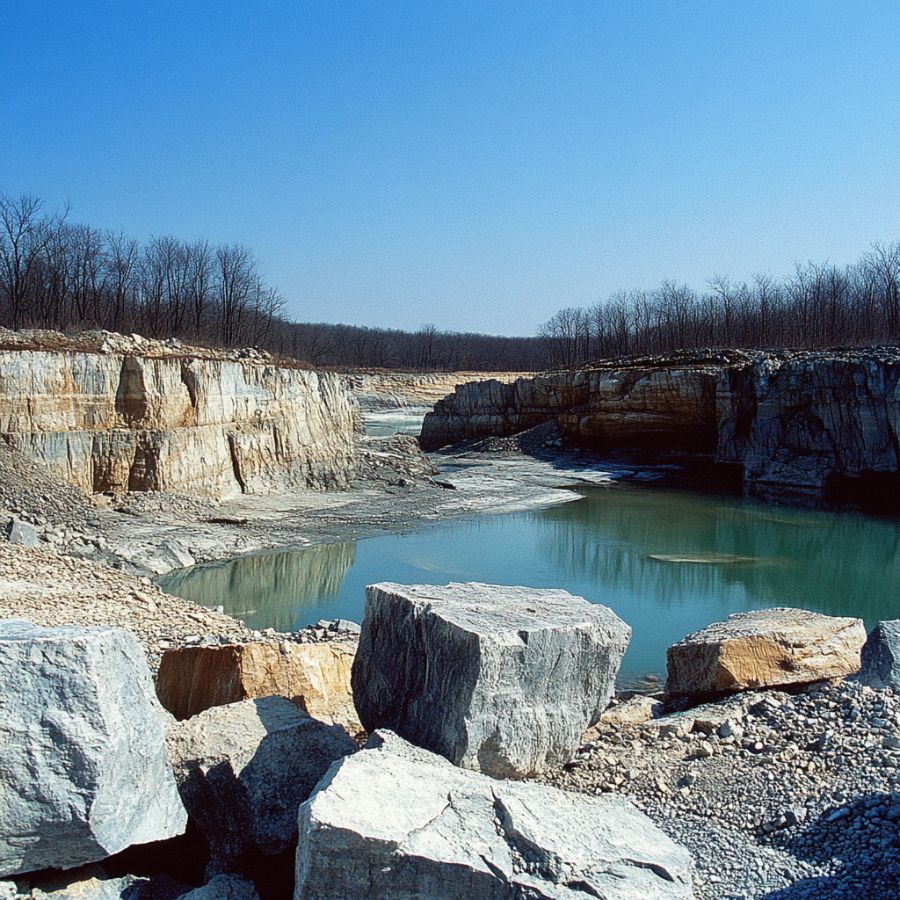
Visit abandoned quarries that were once mined for agates or jasper. While staying within permitted areas, examine the tailings piles (discarded rock material) where miners might have overlooked smaller pieces.
Carnelian sometimes occurs alongside these other chalcedony varieties, and the exposed rock faces in quarries can reveal veins or nodules containing this semi-precious stone.
Some Great Places To Start
Here are some of the better places in the state to start looking for Carnelian:
Always Confirm Access and Collection Rules!
Before heading out to any of the locations on our list you need to confirm access requirements and collection rules for both public and private locations directly with the location. We haven’t personally verified every location and the access requirements and collection rules often change without notice.
Many of the locations we mention will not allow collecting but are still great places for those who love to find beautiful rocks and minerals in the wild without keeping them. We also can’t guarantee you will find anything in these locations since they are constantly changing.
Always get updated information directly from the source ahead of time to ensure responsible rockhounding. If you want even more current options it’s always a good idea to contact local rock and mineral clubs and groups
Woodward Ranch
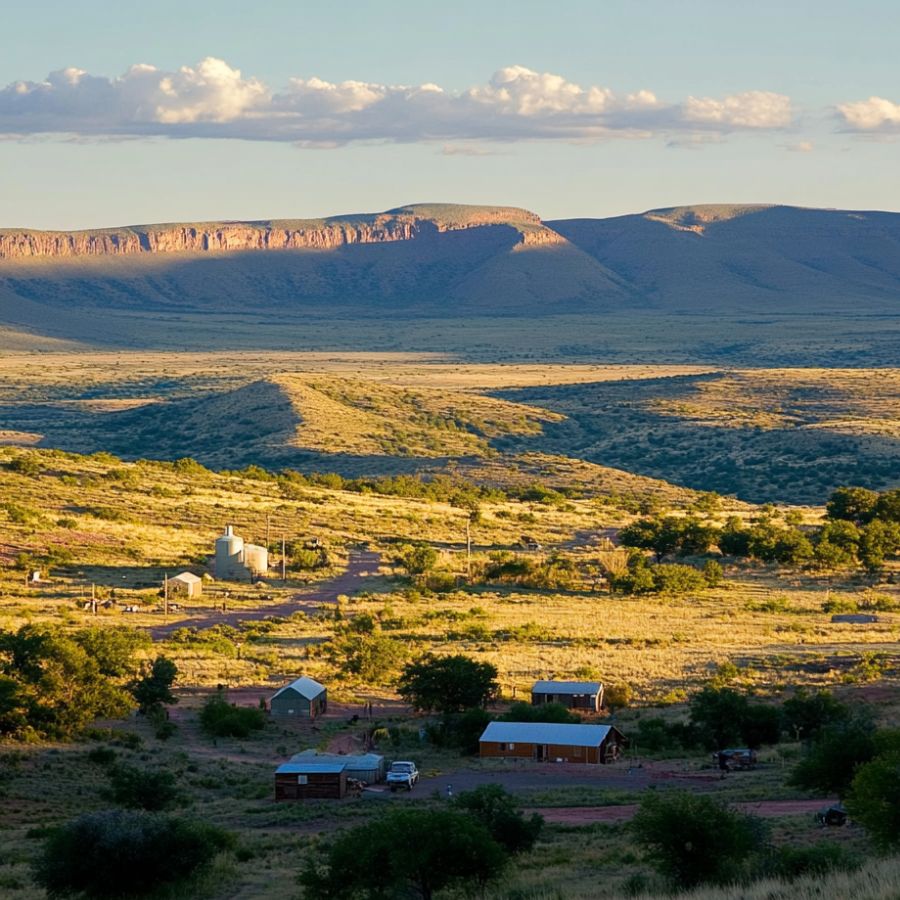
Located near Alpine, Woodward Ranch is famous for its rich deposits of agates, jasper, and carnelian. The deep reddish-orange hues of carnelian found here make it a sought-after prize among collectors.
The region’s volcanic history created a diverse landscape of mineral-rich deposits. You can explore dry creek beds and exposed outcrops, where tumbling water and erosion have uncovered hidden gemstones.
Search near washes and gravel bars for smooth, rounded pieces of carnelian, often mixed with other varieties of agate.
A visit to Woodward Ranch is both an adventure and an educational experience. While the ranch has been closed to the public in recent years, neighboring areas and similar terrain offer opportunities to find carnelian.
You've probably walked past some incredible rocks and minerals. You need this guide 👇👇👇
We've all come across a cool rock that we could have sworn was rare or valuable but couldn't tell what it was.
If you're not 100% confident that you know every rock and mineral in Texas this guide is for you.
The Texas Rocks & Minerals Field Guide helps you ID what you find in seconds, from Hill Country agates to Llano granite, with crisp photos, simple charts, and zero fluff.
→ Grab your copy today and spot your next gem before anyone else does.
What this guide unlocks:
🧭 Confidence in the field — ID rocks fast and move on to the next find
🎒 Lightweight and waterproof — built for trails, not coffee tables
🌅 Weekend adventures — find treasures on rivers, ranches, and roadsides
🤠 Texas pride — explore the real geological beauty of your state
🔥 Motivation — every trip outside feels like a hunt for hidden gems
Ritchie Ranch
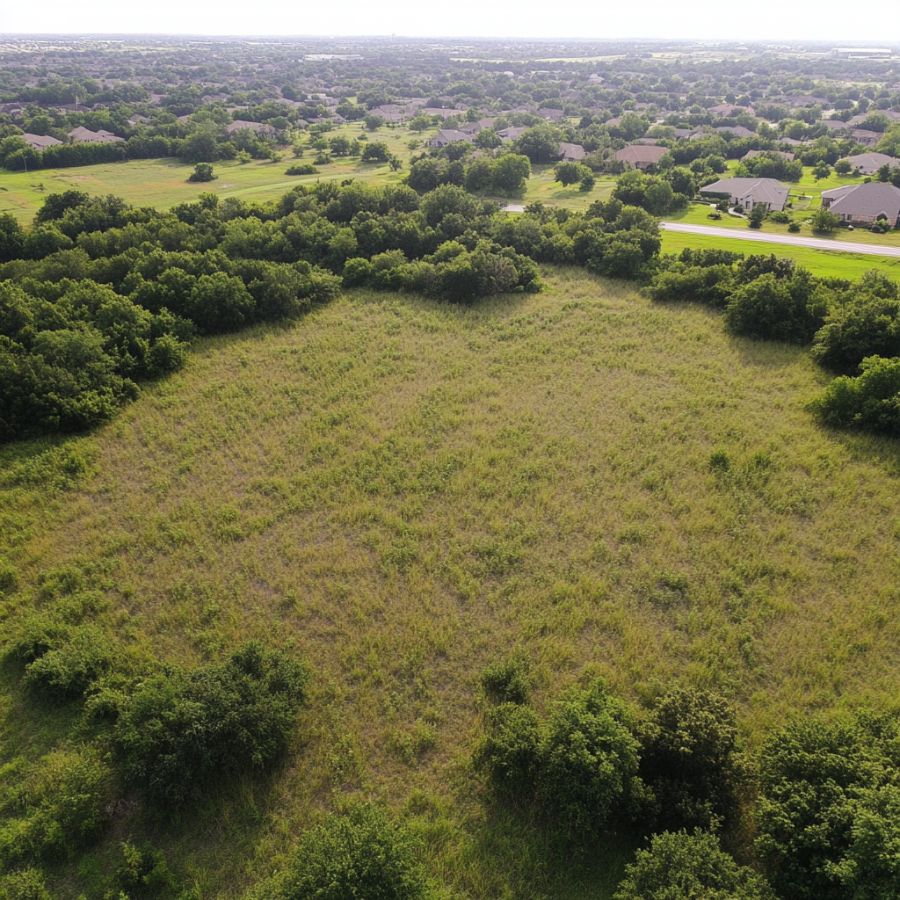
If you’re looking for an easy-access rockhounding spot with a family-friendly atmosphere, Ritchie Ranch is a great choice. Known for its diverse selection of minerals, the ranch has provided collectors with carnelian, agates, quartz crystals, and even some fossils.
Look around exposed rocky hillsides and dry streambeds, where natural erosion reveals hidden carnelian. The stones here range from translucent orange to deep reddish-brown, often appearing as smooth nodules or embedded in matrix rock.
A good tip? Bring a bucket and a sifter—carnelian pieces can sometimes be found mixed with smaller gravel deposits.
East Needle Peak
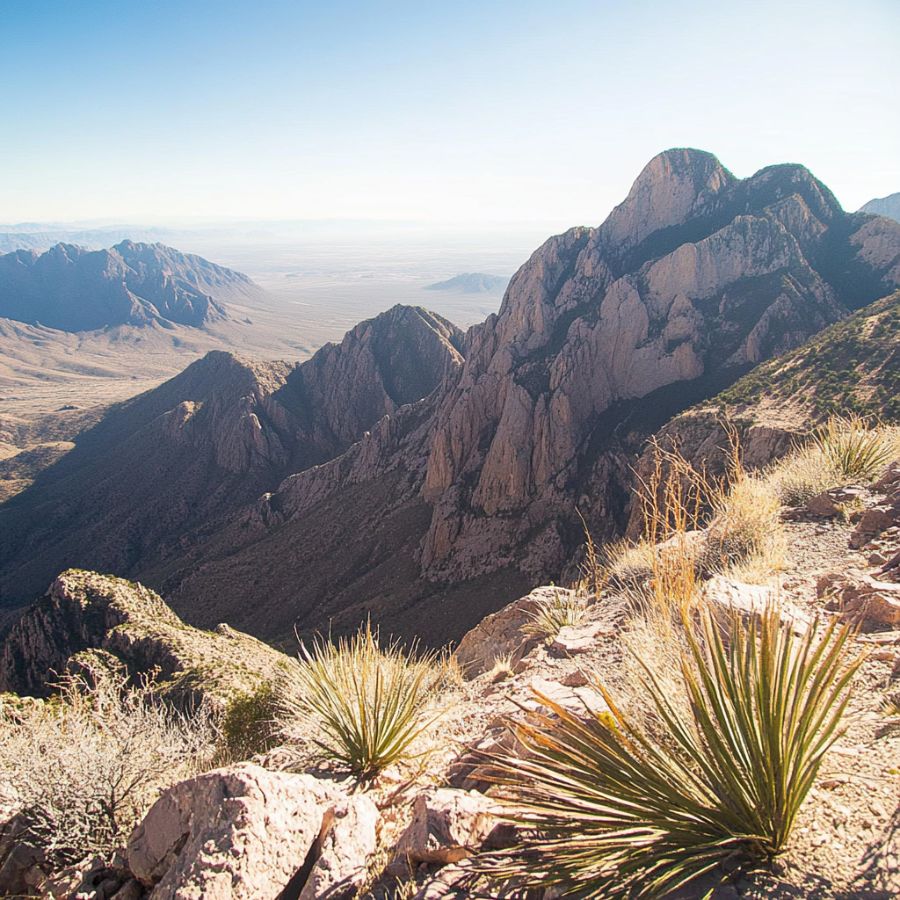
For those who enjoy a challenge, East Needle Peak offers a rugged but rewarding rockhounding adventure. The area is well-known for its Chihuahua Desert geology, which has produced a variety of gemstones, including carnelian.
Carnelian can often be found in weathered rhyolite outcrops and scattered across dry washes. Look for small, polished pieces that stand out against the surrounding gravel.
Some collectors have also discovered carnelian nodules embedded in larger rock formations, requiring careful extraction.
Because this is a remote and challenging location, preparation is key. The desert heat can be intense, so bring plenty of water, sun protection, and durable tools.
Hudspeth Area
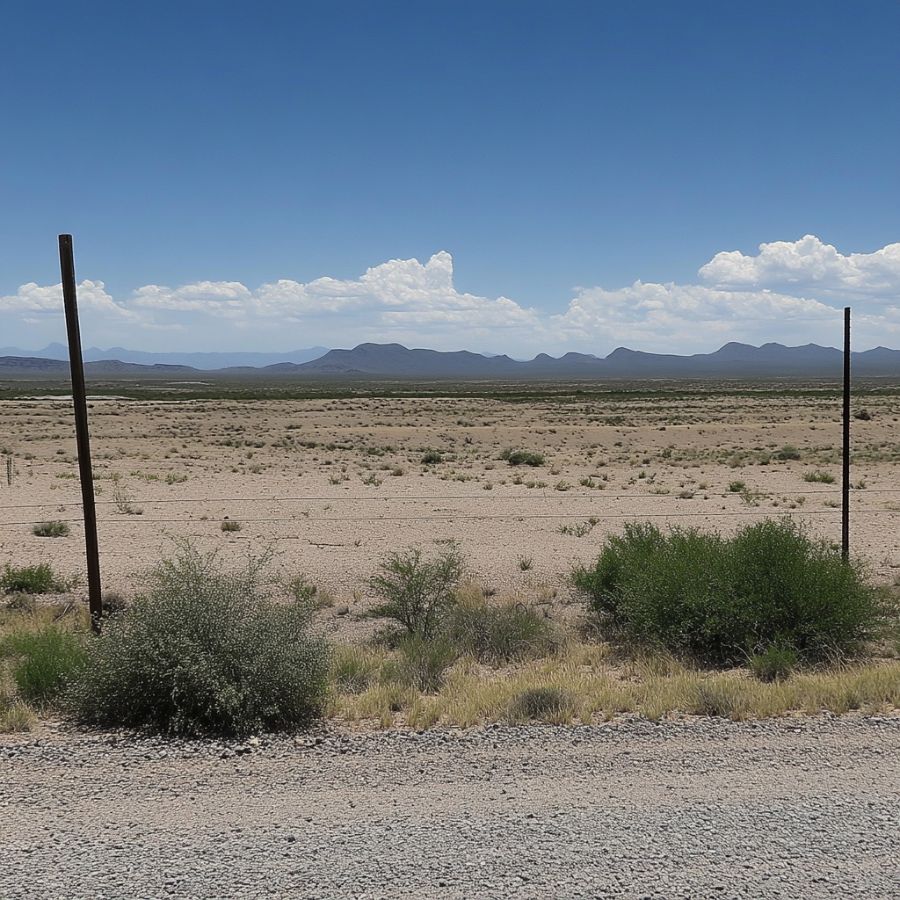
Hudspeth County, located in far West Texas, is a vast and rugged region with some of the best rockhounding spots in the state. It’ i’s famous for its agate fields, where carnelian and other colorful stones can be found.
The presence of ancient lava flows and sedimentary deposits makes it a hotbed for semi-precious gemstones.
One of the best ways to search for carnelian here is by exploring desert washes and eroded slopes.
Terlingua
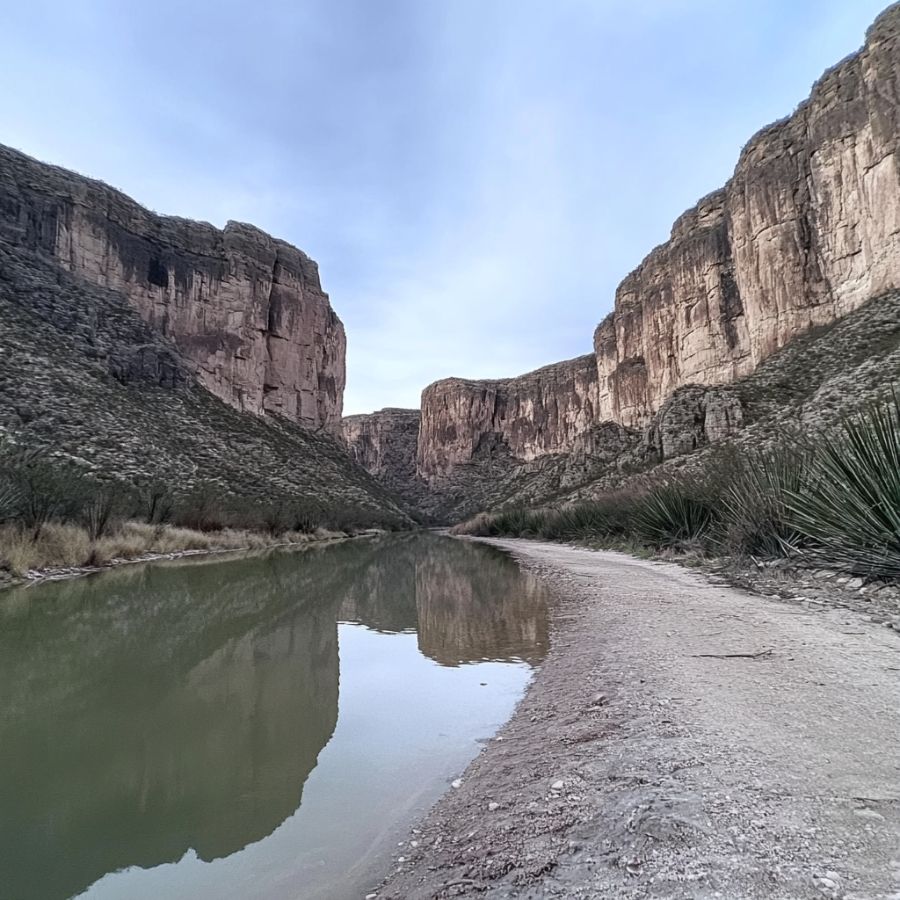
Best known for its ghost town and desert landscapes, Terlingua is also a fantastic location for rock hunting. Situated near Big Bend National Park, this area is rich in volcanic geology, which has led to the formation of various minerals.
Terlingua’s carnelian is often found in limestone deposits and weathered volcanic rock, where silica-rich minerals have settled over time. Searching along rocky hillsides and dry creek beds can yield small but beautifully translucent pieces of carnelian.
The area also offers a chance to find other desert treasures, such as petrified wood, jasper, and calcite.
Places Carnelian has been found by County
After discussing our top picks, we wanted to discuss the other places on our list. Below is a list of the additional locations along with a breakdown of each place by county.
| County | Location |
| Brewster | South Larremore Ranch |
| Brewster | Stillwell Ranch |
| Presidio | Marfa |
| Briscoe | Lake Mackenzie |
| Palo Pinto | Brazos River |
| Tarrant | Benbrook Lake |
| Mason | Garner Seaquist Ranch |
| Mason | Lindsey Ranch |
| Llano | Llano Uplift |
| Hudspeth | Seven Heart Gap |
| Culberson | Dog Canyon |
| Brewster | Glass Mountains |
| Travis | Onion Creek |
| Brazoria | Gulf Coast |
| Fannin | North Sulphur River |
| Wise | Petrified Wood Gas Station |
| Potter | Alibates Flint Quarries National Monument |
| Ector | Odessa Meteor Crater |
| McLennan | Waco Mammoth Site |

